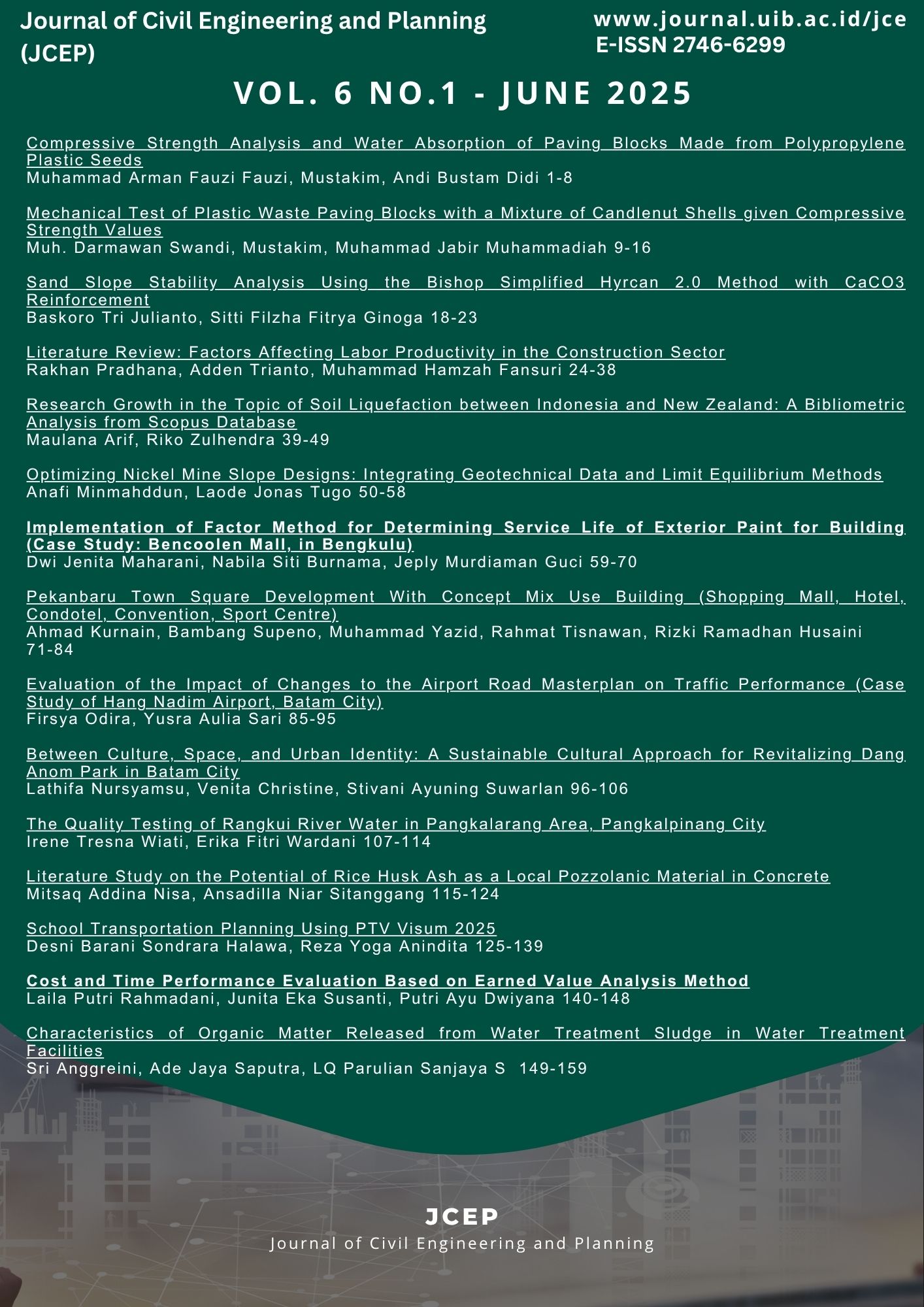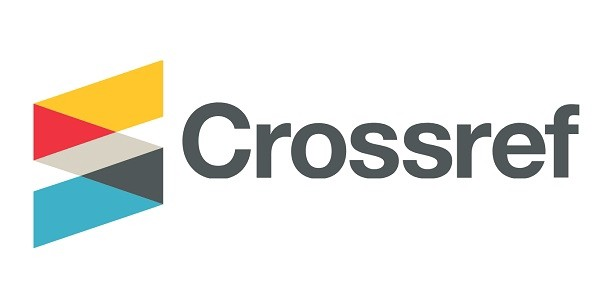Compressive Strength Analysis and Water Absorption of Paving Blocks Made from Polypropylene Plastic Seeds
DOI:
https://doi.org/10.37253/jcep.v6i1.10200Keywords:
Plastik Polypropylene, Kuat Tekan, Daya Serap AirAbstract
The increasing interest of consumers in paving blocks because the construction of paving block pavements is environmentally friendly where paving blocks are very good at helping to conserve groundwater, faster implementation, easy installation and maintenance, have a variety of shapes that add aesthetic value, and the price is easily affordable. The purpose of this study was to determine the effect of adding Polypropylene plastic (PP) pellets on the compressive strength of paving blocks and to determine the effect of adding Polypropylene plastic (PP) pellets on the water absorption of paving blocks. This research method uses an experimental method carried out in the laboratory of structures and materials, Muhammadiyah University of Parepare from July to September 2024. The results of this study indicate that the sutittusi of polypropylene plastic pellets affects the compressive strength of paving blocks. The compressive strength values of paving blocks at 28 days of curing age are 35.583 Mpa, 34.500 Mpa, 33.833 Mpa, and 33.417 Mpa for each variation of 0%, 2%, 5%, and 7%. So by looking at the results obtained above, the higher the percentage of polypropylene plastic pellet substitution, the lower the compressive strength value. While the water absorption value of paving blocks shows that the substitution of polypropylene plastic pellets affects the water absorption of paving blocks. Variations of 0%, 2%, 5%, and 7% are respectively 4.4%, 4.6%, 4.8%, and 5.2%. So by looking at the results obtained above, the higher the percentage of polypropylene plastic pellet substitution, the higher the water absorption.
Downloads
References
N. K. Anggraini, S. Suharyo, and D. R. Arthaningtyas, “ANALYSIS OF PAVING BLOCK COMPRESSIVE STRENGTH TESTS USING COMPRESSION TESTS AND HAMMER TESTS,” 2023.
R. Mildawati, H. Dewi, and F. Syefringga, “Pengaruh Penambahan Limbah Plastik Sebagai Campuran Beton Terhadap Kuat Tekan dan Daya Serap Air Pada Paving Block”.
A. Fauzi, N. K. Handayani, S. Trinugroho, and Y. Nurchasanah, “ANALISIS KUAT TEKAN DAN DAYA SERAP PAVING BLOCK MENGGUNAKAN PASIR SUNGAI SAMIN PADA VARIASI PANJANG SERAT IJUK ANALYSIS OF COMPRESSIVE STRENGTH AND ABSORBENCY OF PAVING BLOCKS USING SAMIN RIVER SAND ON VARIATIONS IJUK FIBER LENGTH,” 2023.
S. Perbandingan Kuat Tekan dan Daya Serap Paving Block Berbahan Dasar Limbah Plastik, A. Muis, A. Sulfanita, J. Teknik Sipil, F. Teknik, and U. Muhammadiyah Parepare, “Jurnal Ilmiah Rekayasa Sipil,” vol. 20, no. 1, 2023.
“JuritiVol1No1”.
F. A. Hakim, “Pemanfaatan Bijih Plastik Jenis High Density Polyethylene (HDPE) Sebagai Subtitusi Agregat Pada Bata Beton (Paving Block).”
“37114-127896-1-PB”.
E. Putra Prasetyo, A. S. Af, B. Afriandini, and E. Putra Praetyo, “EFFECT OF HDPE (HIGH DENSITY POLYETHYLENE) PLASTIC WASTE ADDITION ON COMPRESSION STRENGTH OF PAVING BLOCK,” 2024.
S. A. Rahmi, E. N. Lydia, M. Purwandito, and N. P. Lisa, “Analisis Perbandingan Mutu Eco Paving Block Berbahan Baku Limbah Plastik,” Teras Jurnal : Jurnal Teknik Sipil, vol. 12, no. 2, p. 395, 2022, doi: 10.29103/tj.v12i2.733.
N. Nursakinah, Z. Zulnazri, S. Bahri, A. Fikri, and M. H. Af, “Analisa Variasi Polyethylene Terephthalate (Pet) Dan Cangkang Telur Sebagai Bahan Pembuatan Paving Block Ramah Lingkungan,” Chemical Engineering Journal Storage (CEJS), vol. 3, no. 4, p. 560, 2023, doi: 10.29103/cejs.v3i4.11093.
Downloads
Published
Issue
Section
License
Copyright (c) 2025 Muhammad Arman Fauzi Fauzi, Mustakim, Andi Bustam Didi

This work is licensed under a Creative Commons Attribution 4.0 International License.



_0011.jpg)









